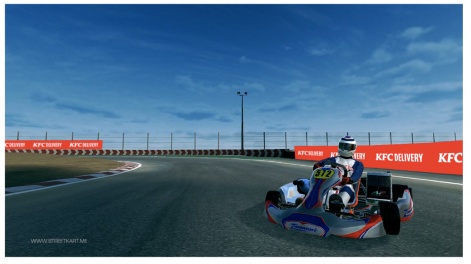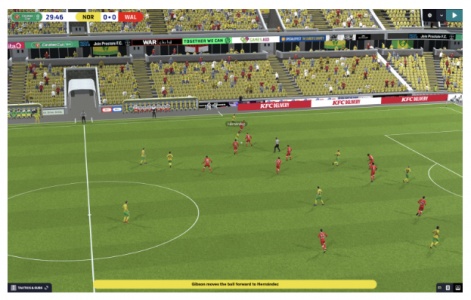How can the mobile games industry attract more brands? | Pocket Gamer.biz

Mobile game advertisements play an essential role in user acquisition, with the hope that when an ad pops up in-game, the player will go ahead and download that new game. While this is common in mobile, you wouldn’t catch Netflix advertising for Amazon Prime or vice versa. So what are some other mobile advertising methods? How can studios engage with big-name brands and do so in a way that doesn’t feel intrusive to the player?
In this guest post, VP of enterprise at Bidstack, Chris Vincelli and VP of gaming, Antoine Jullemier share what these brands want and how developers can entice them with more organic advertisement methods.

The mobile games industry has a unique relationship with ads. Publishers extensively use ad networks and major platforms like Facebook, Google and TikTok for their user acquisition campaigns to scale their games to millions of users. Meanwhile, the vast majority of ads served in mobile games direct players to other games.
The goal of all this is for publishers to get new installs – ideally for players most likely to spend, a strategy made all the more challenging with Apple’s app tracking transparency policies – while others generate revenue from serving these ads in their games.
There is nothing inherently wrong with this strategy; it makes perfect sense. Even the perceived risk of advertising rival games has largely dissipated because it doesn’t really matter.
But something is missing. Where are all the big consumer brands? Why aren’t they clamouring to reach gaming’s vast, engaged audience as they do with tv and social media?
Market Opportunity
Data.ai estimates the mobile app economy is worth $500 billion, with 67%, or $336 billion, generated by advertising. Games account for 35% of ad revenue, or roughly $117.6 billion, which puts it on par with in-app purchases, while non-gaming accounts for 65%.

While user acquisition is more challenging and costs have risen, so has revenue generated from the sector, increasing by 14% year-over-year in 2022. That’s in stark contrast to in-app purchases, which saw consumer spending fall by 2% Y/Y.
Despite being the largest revenue generators and establishing enormous, highly engaged audiences, brands are underserved in mobile gaming. There is a clear opportunity to get more globally recognised brands advertising in games, which cater to all the audiences they already target in other media channels.
One of the biggest hurdles for games serving these ads is ensuring they don’t harm a brand’s reputation.
What do brands want?
Much like game publishers serving ads, brands want ad engagement. Across most brand advertising, the goal – immediate or eventual – is to convert consumers into paying customers. Metrics such as brand recall should not be underestimated either, particularly when they are heightened by non-intrusive ad formats and create an association between a brand and a fun gaming experience.
One of the biggest hurdles for games serving these ads is ensuring they don’t harm a brand’s reputation. Concerns often centre around violence and how communities are monitored to abide by certain guidelines, whether that’s simply a standard 18+ FPS, player behaviour towards each other or user-generated content. Surprisingly, the games market at large also still suffers from outdated perceptions of audience stereotypes, e.g. skewed toward children and males. As we all know by now, this is not the case, but the games industry has to keep hammering the message home.
Many brands also have a bias toward console platforms, traditionally home to big triple-A experiences. While these games can bring in large audiences and generate significant engagement on larger screens, mobile is by far the largest game sector by revenue and number of players. And games like Roblox, Genshin Impact and Football Manager are increasingly available across all platforms or even play cross-platform over a single account.
What can developers do to entice brands?
Changing perceptions amongst brands is an ongoing battle. But there are things developers can do to help entice them.
Some giant developers, such as Epic Games and Roblox, have had massive success with custom brand partnerships. At this point, Fortnite has worked with most brands on the planet, anything from Star Wars and Marvel to Nike. These partnerships have been woven into the game’s story or simply based on cosmetics that players can obtain or new creative islands to visit. Meanwhile, Roblox has opened special worlds within the game focused exclusively on brand experiences, such as the Gucci Garden and, later, the persistent Gucci Town.
Brands and agencies are more naturally comfortable with this type of campaign. It’s basically experiential marketing in a virtual world, working directly with a multibillion-dollar company to make it happen. But this is not a particularly scalable option. For every brand that will benefit from a massive custom activation, there are dozens, if not hundreds, of others that would benefit from reaching gamers at scale without breaking the bank. This is where a programmatic approach comes in and is what the $336 billion mobile ads market is built on.
A general rule of thumb for in-game ads is to ensure they utilise a simple but bold creative on a blank background
Viewability
One of the important standard metrics brands look at is viewability: essentially, how many times their ad creative has been visible on a screen. This could be video, playable, rewarded, or static interstitial. Much like with existing mobile game ads, it’s simple to see how many ads have been served and track the click-through rate. But games can go one step further with in-game ads, which are advertisements placed within the game world.
Examples of this include Football Manager, which utilises real brands on the pitch-side advertising around the stadium, just like in real life. Dynamically updated trackside billboards are also being integrated into racing games such as GT Manager and Street Kart Racing. These types of ads work for brands as they are non-interruptive and have constant re-engagement, a benefit unique to gaming compared to other entertainment mediums. Developers can work with companies like Bidstack to ensure they’re following best practice guidelines on the sizing and positioning of these ads, creating peace of mind for brands. A general rule of thumb for in-game ads is to ensure they utilise a simple but bold creative on a blank background, which is particularly effective in a fast-paced game environment. High contrast, minimal copy and clear messaging are key.
As for measurements, standard IAB sizes can be used to ensure efficiency and ease of delivery for advertisers. The most used creative size for in-game ads is 728 x 90, while other sizes typically include 970 x 250, 320 x 50, 320 x 100 and 300 x 250. Of course, each game is different, and in certain cases, different formats can be used. Football Manager, for example, utilises a 2160 x 100 creative size. However, developers should keep in mind the creatives that advertisers are most likely to use, which would include the more standard sizing as described above.
As in-game ads don’t typically enable clicks (who wants to leave a game they’re enjoying?), other advertising measurement metrics, such as user attention, come into play.

The key to making any form of gaming brand advertising successful, and ultimately brands happy, is ensuring these ads are surfaced at scale, at the right time, to the most relevant players. Good placement and prominence are crucial for brands though, of course, a balance needs to be made to ensure they don’t interfere with the gameplay experience, which is of benefit to no one.
There is clearly money left on the table for brands to advertise in games and for developers to generate more revenue from ads by ensuring the right conditions for their success. The mobile ads industry is already enormous, and with more brands engaged in mobile gaming, it can be worth a whole lot more.
Edited by Paige Cook
